The fragility of the sign: endangered African rock art on display in Florence
The National Archaeological Museum in Florence is hosting on its second floor, until Nov. 26, the exhibition The Fragility of the Sign. Rock Art of Africa in the Archives of the Italian Institute of Prehistory and Protohistory.
Curated by Anna Revedin, Luca Bachechi, Andrea De Pascale, and Silvia Florindi, of the Italian Institute of Prehistory and Protohistory, in collaboration with the National Archaeological Museum of Florence Polo Museale della Toscana, the initiative aims to make known and make visible the vast and valuable scientific, photographic and documentary documentation owned by the Institute and related to the missions and studies on African rock art conducted by Paolo Graziosi during his travels in Africa between 1933 and 1972. The importance of this material collected and now shown to the public stems from the fact that Graziosi is still considered the leading Italian scholar of prehistoric art and founder of the Italian Institute of Prehistory and Protohistory. The exhibition is, in fact, part of a larger project, called Archaeology in the Desert and conducted by the IIPP, with contributions from MIUR and the CRF Foundation, on Paolo Graziosi’s photographic archive, owned by the Institute. The archive, declared by the Regional Directorate for Cultural and Landscape Heritage of Tuscany to be of particularly important historical interest, comes from Paolo Graziosi’s bequest and includes 10338 digitized images of slides, negatives and photographic positives, as well as several dozen black-and-white and color films. Testifying to prehistoric and protohistoric studies, research, excavations and related conferences, it stands as one of the most important documentation funds in the field in Italy for European and African prehistoric studies.
The intentions of the exhibition start from what is nothing but the current world geo-political picture, which leads, or should lead, all of us, and not only the curators of the exhibition, to question what the future of the oldest and most significant testimonies of the past might be, particularly in those areas affected and battered by wars and destructive ideologies, as Libya is today, a country so much investigated by Graziosi and today inaccessible because of ongoing conflicts. One should also ask oneself, how to preserve the memory of this cultural-historical heritage and what could be the tools to raise awareness and approach the wide public of the uninitiated to this delicate subject.
In the exhibition, it is thus proposed, through images and films from Graziosi’s photographic archive, evidence of some of the oldest and most extraordinary artistic attestations of Humanity, such as the great prehistoric engravings, surveyed by Graziosi in Libyan territory. The short exhibition itinerary is divided into three sections, set up in only three rooms (those on the second floor of the National Archaeological Museum in Florence, which are usually closed to the public and thus find a new exhibition function for this occasion). The first section introduces the theme of Artistic and Documentary Heritage in Danger and provides initial information regarding the figure of Paolo Graziosi. The second section, on the other hand, delves into the subject of the research conducted by Graziosi and now carried on by Luca Bachechi in present-day Ethiopia. Finally, the third section is dedicated to the projection of images and films on rock art and Graziosi’s ethnographic research in Libya.
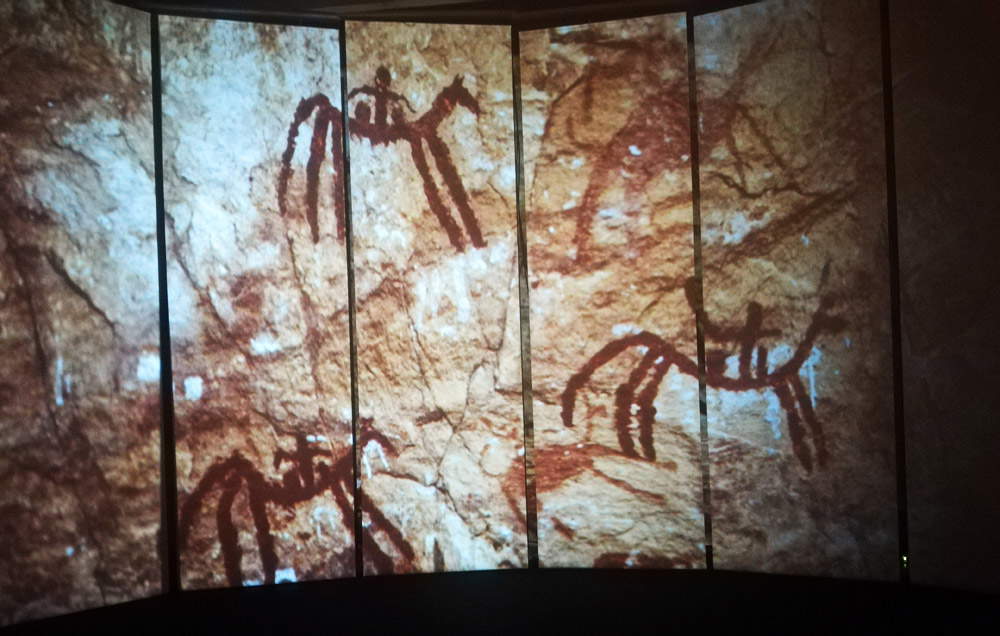 |
| “The Fragility of the Sign” exhibition. Images and videos projected in the third section |
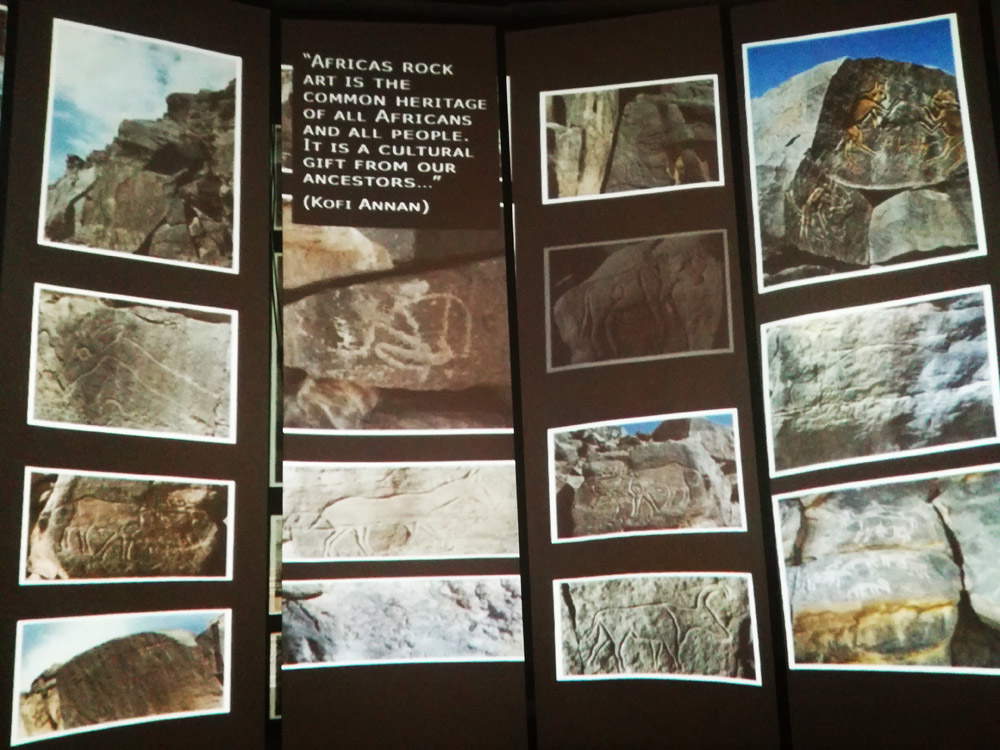 |
| “The Fragility of the Sign” exhibition. Images and videos projected in the third section |
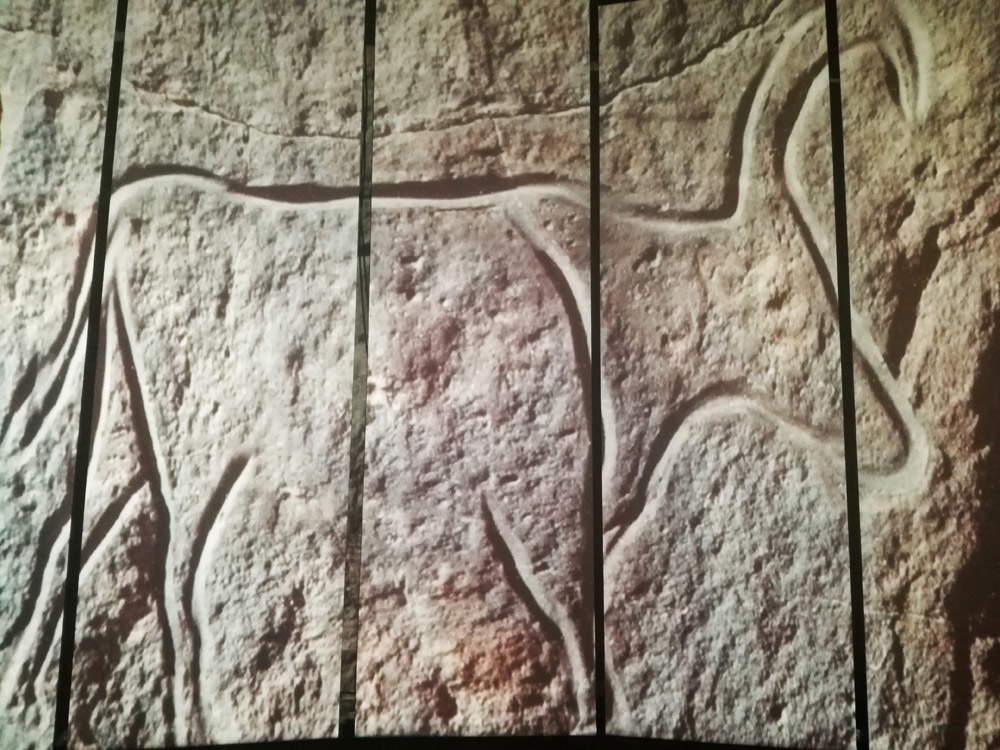 |
| “The Fragility of the Sign” exhibition. Images and videos projected in the third section |
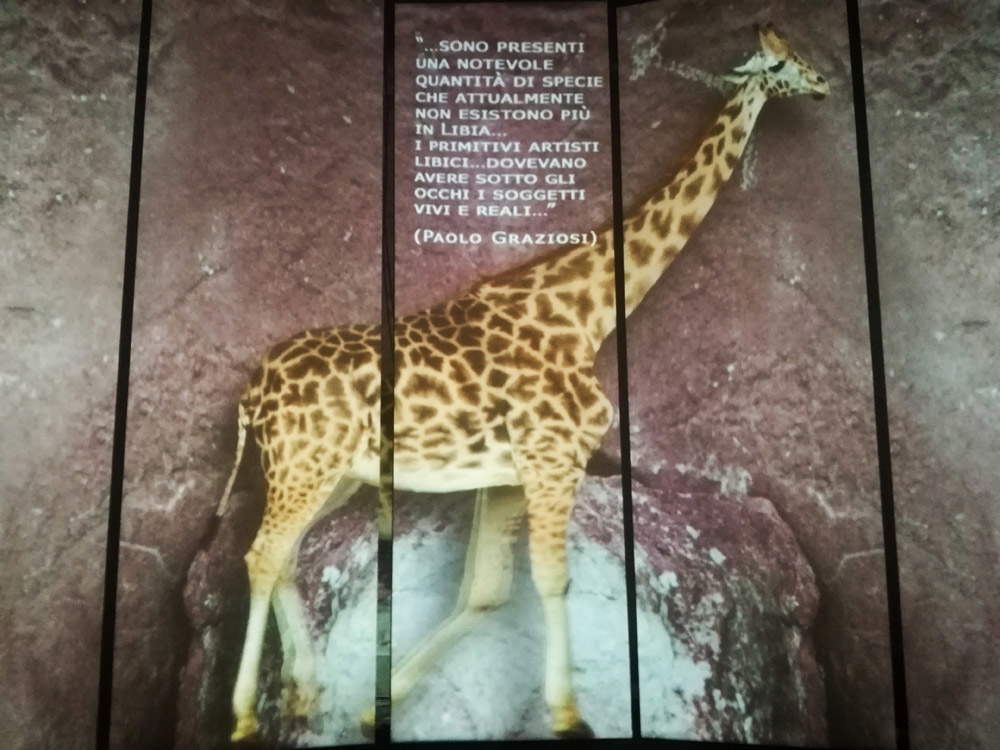 |
| “The fragility of the sign” exhibition. Images and videos projected in the third section |
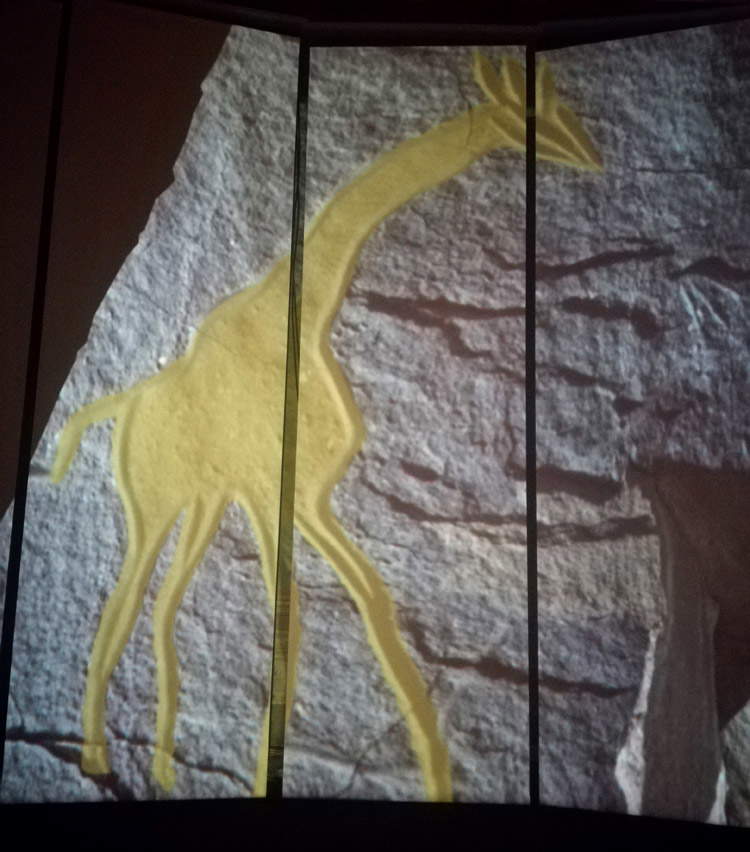 |
| “The fragility of the sign” exhibition. Images and videos projected in the third section |
The theme Signs in Danger acts as a common thread throughout the exhibition, since precisely one of the sites studied by Paolo Graziosi, that of Tadrart Acacus in Libya, a UNESCO World Heritage Site since 1985, was placed on the List of World Heritage in Danger in July 2016. For this reason, it was decided to accompany the exhibition with three particularly significant educational panels (one per room). Panels that analyze precisely the theme of Heritage in Danger, presenting it (the one in the first room) and emphasizing the richness and exceptionality of those sites (the other two), to the study of which Graziosi has made an important and fundamental contribution, since these are studies that always refer to the analysis of the geographical and climatic conditions of the territories in which the artistic achievements were produced. But also how and how much these conditions influenced the habits and lifestyles of primitive men.
The exhibition itinerary, while forced in its progression, offers the opportunity to see and then review a second time, in light of what was shown in the last room, the documents and videos displayed in the previous two. Going down to the specifics, the exhibition begins in the first room with a video exemplifying the barbarity and destructive madness of ISIS against the heritage of priceless historical, artistic and cultural value, shattered precisely by the Caliphate. It then continues in the second with an installation of videos and reproductions of rock art and the territories of the Horn of Africa. It also dedicates a small display case to the figure of scholar Paolo Graziosi, also author of important essays on the subject of rock art, the result of his missions. The third room, is not only fascinating and captivating from a sensory point of view, but if enjoyed and observed with calm and curiosity, it turns out to be a real experience that leaves the viewer a little richer, culturally speaking, than when he entered it. The films, photographs, reconstructions, even animated ones, of the cave paintings and the sites that house them, of the missions and excavations conducted by Graziosi, of the landscapes and animals that populate them, all accompanied by musical motifs of clear African derivation, constitute a beautiful and stimulating experience, yes, sensory, but also emotional. Leaving this last room, what appears before our eyes and what we had seen just before, appears different, because it is even more beautiful, fascinating and, for this reason, even more fragile. One feels obliged to defend this beauty.
Accompanying the exhibition is the catalog, edited by Andrea De Pascale and Luca Bachechi, with a rich selection of images from the Graziosi archive and a series of short introductory essays with a popular slant, therefore, suitable for an audience not only of insiders, but potentially wider. Useful didactic tools, also for foreign audiences, are the English-language brochures, which translate the texts of the panels on display in the exhibition into Italian only.
Warning: the translation into English of the original Italian article was created using automatic tools. We undertake to review all articles, but we do not guarantee the total absence of inaccuracies in the translation due to the program. You can find the original by clicking on the ITA button. If you find any mistake,please contact us.





























